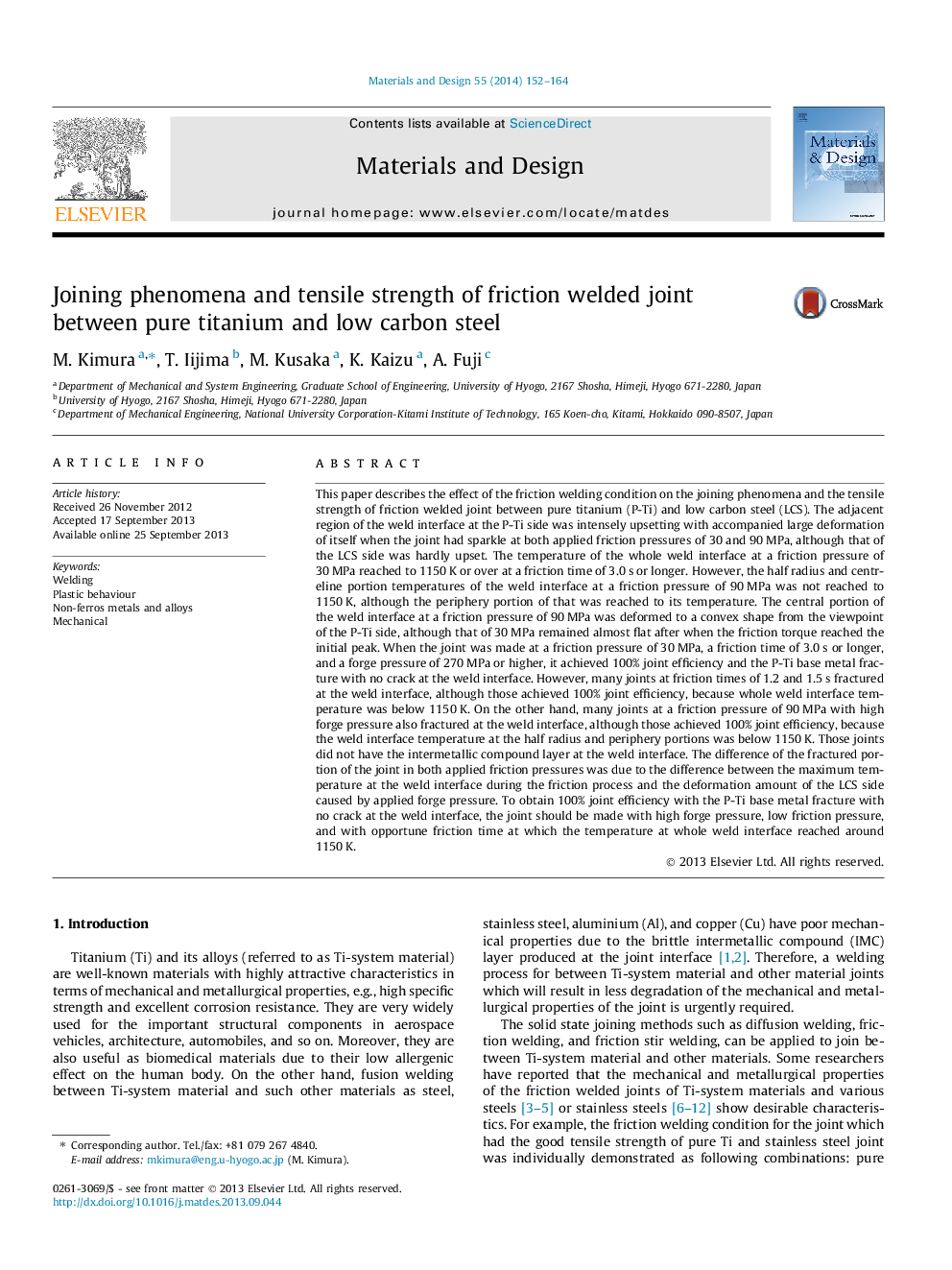| کد مقاله | کد نشریه | سال انتشار | مقاله انگلیسی | نسخه تمام متن |
|---|---|---|---|---|
| 829521 | 1470342 | 2014 | 13 صفحه PDF | دانلود رایگان |
• Joining phenomena of friction welding for pure Ti and low carbon steel was clarified.
• Temperature distribution at the weld interface at applied friction pressure differed.
• The joining phenomena at friction pressure of 30 MPa were similar to that of 90 MPa.
• Ti side fracture joint was obtained at low friction pressure and high forge pressure.
• The joint should be made with the whole weld interface temperature around 1150 K.
This paper describes the effect of the friction welding condition on the joining phenomena and the tensile strength of friction welded joint between pure titanium (P-Ti) and low carbon steel (LCS). The adjacent region of the weld interface at the P-Ti side was intensely upsetting with accompanied large deformation of itself when the joint had sparkle at both applied friction pressures of 30 and 90 MPa, although that of the LCS side was hardly upset. The temperature of the whole weld interface at a friction pressure of 30 MPa reached to 1150 K or over at a friction time of 3.0 s or longer. However, the half radius and centreline portion temperatures of the weld interface at a friction pressure of 90 MPa was not reached to 1150 K, although the periphery portion of that was reached to its temperature. The central portion of the weld interface at a friction pressure of 90 MPa was deformed to a convex shape from the viewpoint of the P-Ti side, although that of 30 MPa remained almost flat after when the friction torque reached the initial peak. When the joint was made at a friction pressure of 30 MPa, a friction time of 3.0 s or longer, and a forge pressure of 270 MPa or higher, it achieved 100% joint efficiency and the P-Ti base metal fracture with no crack at the weld interface. However, many joints at friction times of 1.2 and 1.5 s fractured at the weld interface, although those achieved 100% joint efficiency, because whole weld interface temperature was below 1150 K. On the other hand, many joints at a friction pressure of 90 MPa with high forge pressure also fractured at the weld interface, although those achieved 100% joint efficiency, because the weld interface temperature at the half radius and periphery portions was below 1150 K. Those joints did not have the intermetallic compound layer at the weld interface. The difference of the fractured portion of the joint in both applied friction pressures was due to the difference between the maximum temperature at the weld interface during the friction process and the deformation amount of the LCS side caused by applied forge pressure. To obtain 100% joint efficiency with the P-Ti base metal fracture with no crack at the weld interface, the joint should be made with high forge pressure, low friction pressure, and with opportune friction time at which the temperature at whole weld interface reached around 1150 K.
Journal: Materials & Design - Volume 55, March 2014, Pages 152–164
